During the last year I’ve been rereading the blog and putting it into book form. I now regret that I stopped writing personal posts. I also regret that I wasn’t more detailed about the people I met. Who were the two ladies in New York I went to lunch with? Not surprisingly, I find I am still ranting about all of the same things: climate change, vagaries of the healthcare system, high cost of persecution drugs. Also, I’m surprised at how much I traveled. It’s no wonder I’ve been feeling so confined for the last three years.
I’ve been very careful. Mostly I stay home. I try to go out and walk in my neighborhood for at least one and a half miles every day.. When the Covid case count is low I get on the bus and walk in a different neighborhood. I want to run away but, at the same time, I’m not unhappy when a flight plan falls through. I’m supposed to go with Kathy to see the Pompeii exhibit at the Carnegie Science Center on Thursday and go to Philadelphia next week. We’ll see.
I’m working on my 108th book called Waiting for Nothing to Happen, Third Year. It’s all pictures of sidewalks. If this goes on for another year, a distinct possibility, maybe I’ll take pictures of bricks.

Now that I’ve gone beyond 100 books, maybe I’ll change the name of the blog. Also, I may make it private for the next few months. If I know you and you want to continue following me, you have to let me know. I’ll give you a little warning before I do it.
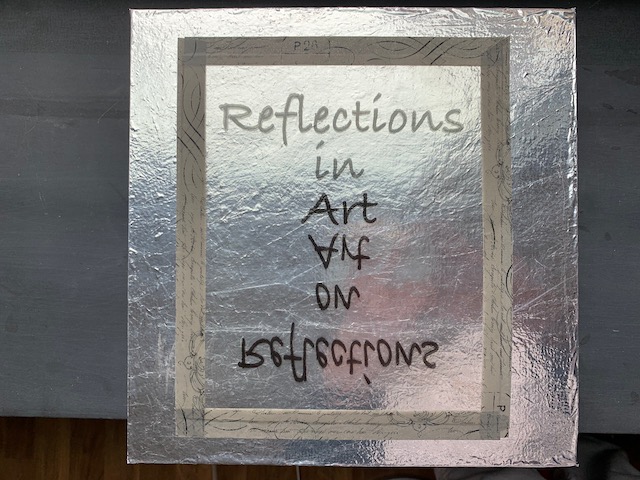
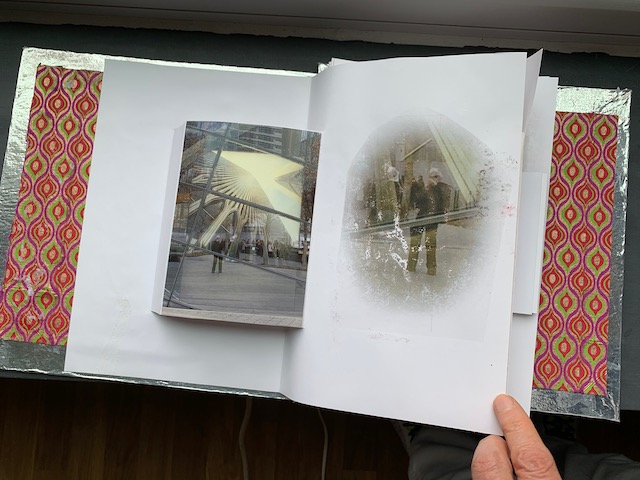



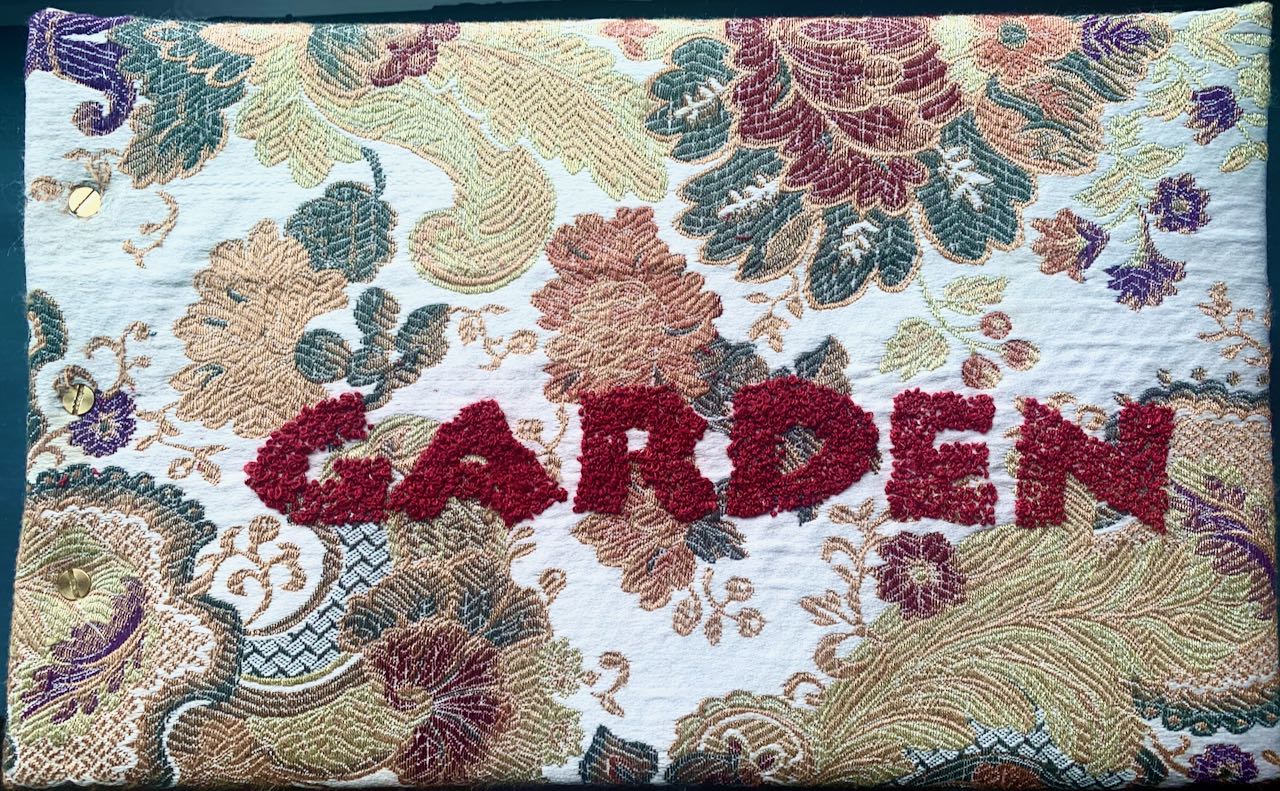


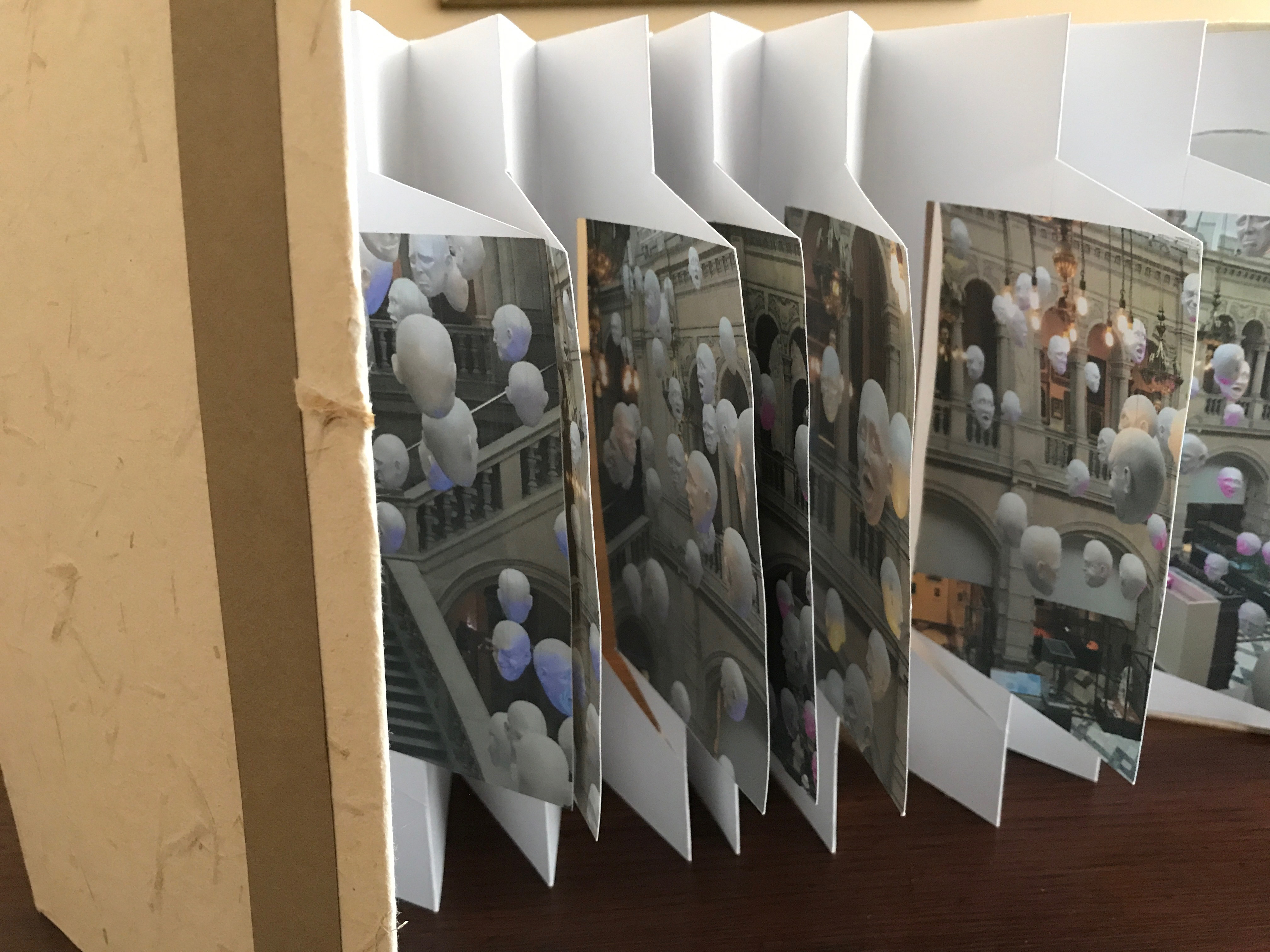
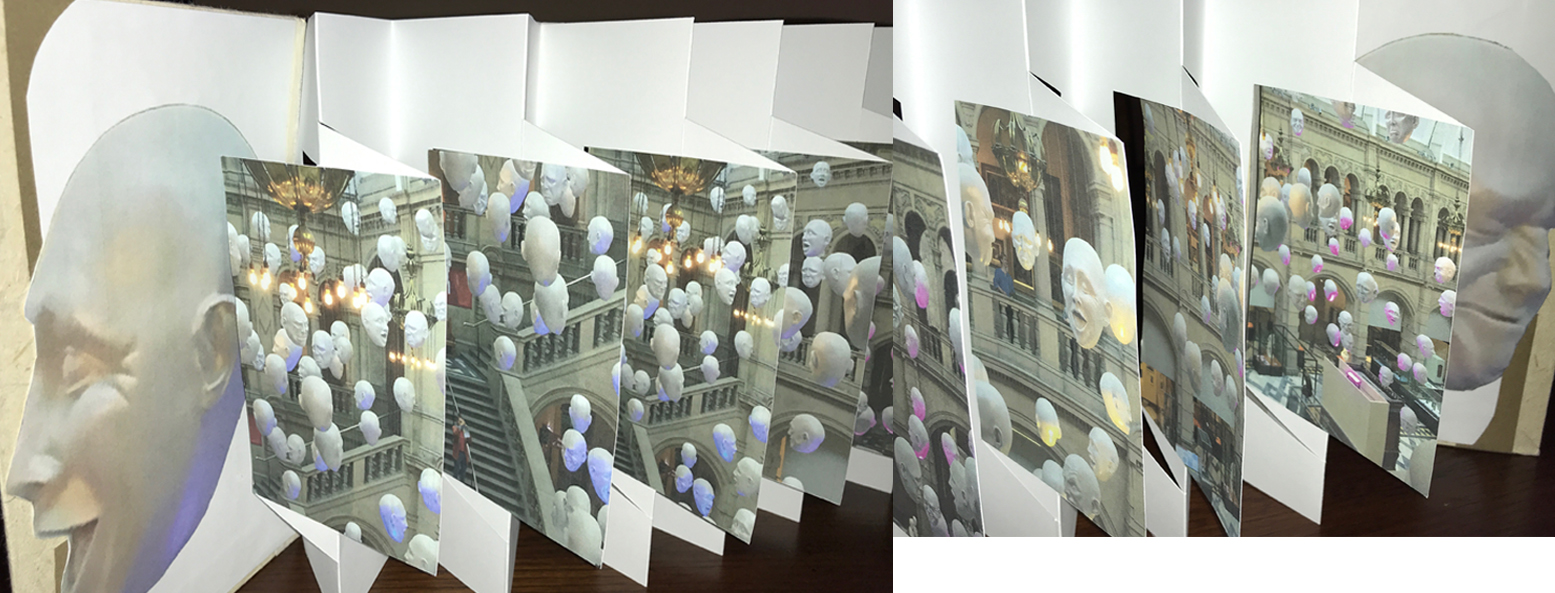
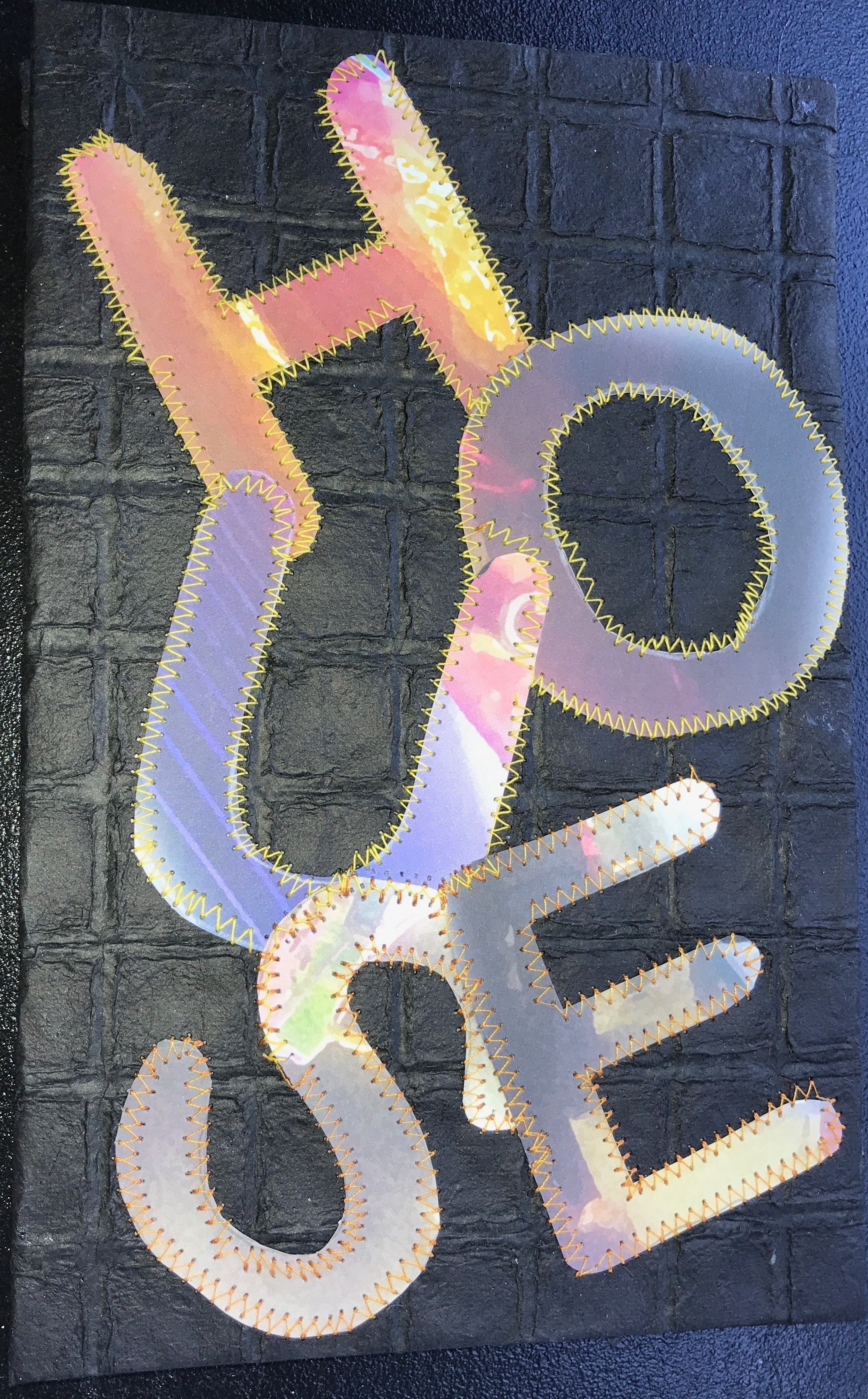



 My pages were single sheet so I created a small book block with fourteen folded signatures then glued each of the sheets to the inside of each side of the signature. I made tapes out of book cloth to affix the covers and sewed each of the signatures around the tapes. I did not use good thread and probably not very good glue. Here you can see the glued on maple seeds, many of which have fallen off, and how the book is coming apart. Someday I may rebind it.
My pages were single sheet so I created a small book block with fourteen folded signatures then glued each of the sheets to the inside of each side of the signature. I made tapes out of book cloth to affix the covers and sewed each of the signatures around the tapes. I did not use good thread and probably not very good glue. Here you can see the glued on maple seeds, many of which have fallen off, and how the book is coming apart. Someday I may rebind it. Maple seeds are printed on this page, probably before I wrote the text. On the left is an accordion-fold pull out with many of the pictures I couldn’t fit into the regular pages. Paper for the signatures was created in the workshop using some kind of rust mixture. Sandy was very big on rust at that time.
Maple seeds are printed on this page, probably before I wrote the text. On the left is an accordion-fold pull out with many of the pictures I couldn’t fit into the regular pages. Paper for the signatures was created in the workshop using some kind of rust mixture. Sandy was very big on rust at that time.
 This book, a kind of tribute to my mother who had recently died, was the only other book made in the printing/copy shop. Designed and printed in 1994, it is 4″ x 5″, 26 single sheets bound with a machine we had in the shop, and an edition of 400 copies. I included a portrait of my mother as a young woman, her wedding picture (top), her parents at the wedding of her oldest brother (below) and a picture of my grandmother and her three sisters when they arrived in the US. The story is about our search for a special apple kugel recipe Mama kept experimenting with and we thought was lost, some historical material about that particular kind of kugel also known as a shalet and a few really good recipes. I gave the books to my customers as a Christmas present and I’m still giving them away to friends and relatives.
This book, a kind of tribute to my mother who had recently died, was the only other book made in the printing/copy shop. Designed and printed in 1994, it is 4″ x 5″, 26 single sheets bound with a machine we had in the shop, and an edition of 400 copies. I included a portrait of my mother as a young woman, her wedding picture (top), her parents at the wedding of her oldest brother (below) and a picture of my grandmother and her three sisters when they arrived in the US. The story is about our search for a special apple kugel recipe Mama kept experimenting with and we thought was lost, some historical material about that particular kind of kugel also known as a shalet and a few really good recipes. I gave the books to my customers as a Christmas present and I’m still giving them away to friends and relatives.

 In 1990 Richard and I bought a printing/copy franchise. The business seemed to consume my life, but it also gave me some opportunities: first to learn to use the computer; then to make a book. This book, titled Alas Art Aches Awesomely, was made entirely on the computer or a copier. I don’t remember all of the details of its creation or the number of copies I finished. Possibly I made the entire book on the computer and printer using only the shop cutter and stapler for binding. It has a transparent cover, text weight paper, folded, and is bound with a single staple. Size is approximately 4″x 3½”. I used CorelDraw, the only program I knew at that time.
In 1990 Richard and I bought a printing/copy franchise. The business seemed to consume my life, but it also gave me some opportunities: first to learn to use the computer; then to make a book. This book, titled Alas Art Aches Awesomely, was made entirely on the computer or a copier. I don’t remember all of the details of its creation or the number of copies I finished. Possibly I made the entire book on the computer and printer using only the shop cutter and stapler for binding. It has a transparent cover, text weight paper, folded, and is bound with a single staple. Size is approximately 4″x 3½”. I used CorelDraw, the only program I knew at that time.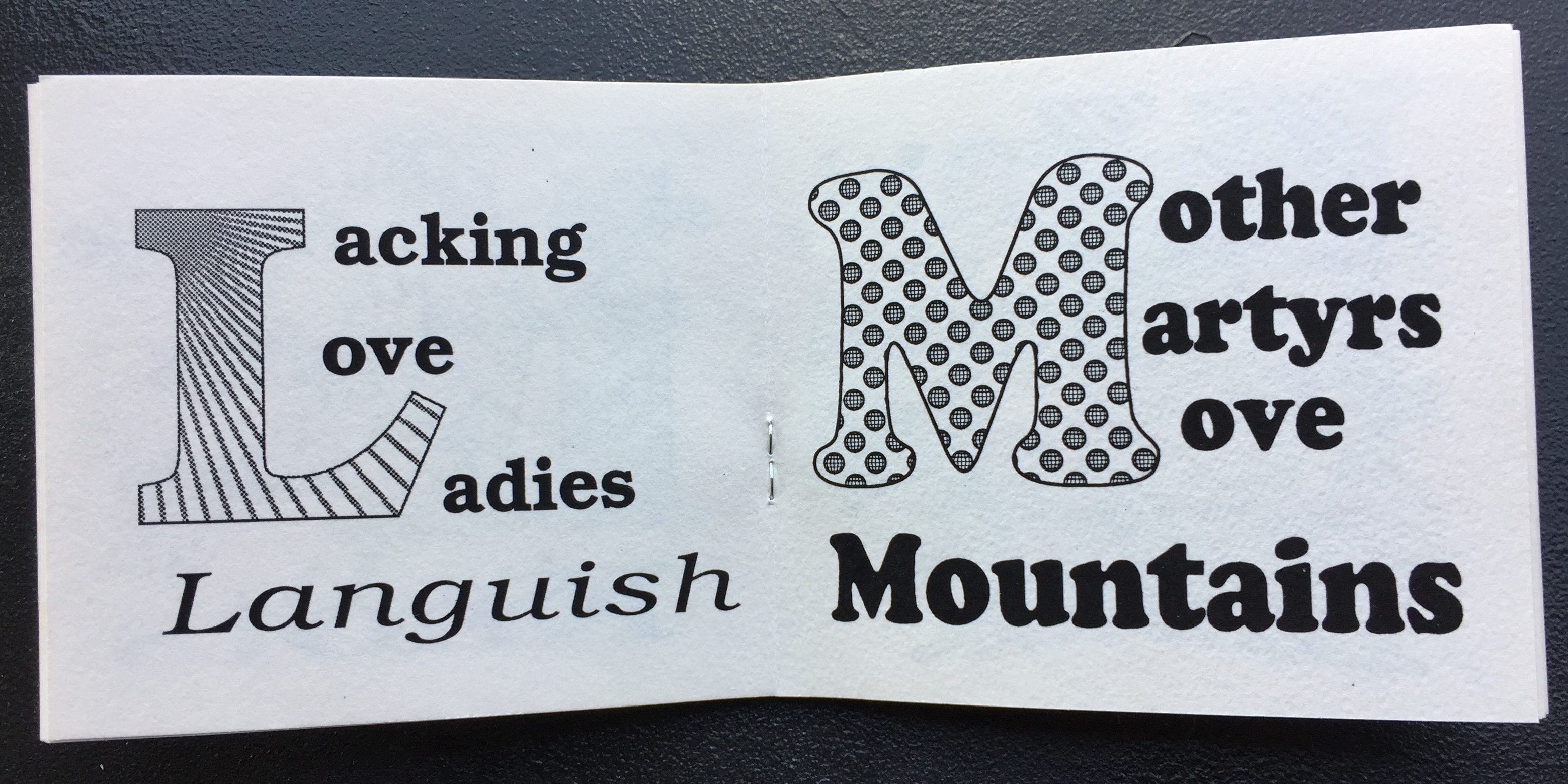 Recently (2016), I decided to redo the book. I now use a more powerful computer, a much more sophisticated program, Adobe Indesign, an archival printer and carefully selected papers. Much of the original book is a kind of plaintive rant. I modified the new book to reflect my more relaxed attitude.
Recently (2016), I decided to redo the book. I now use a more powerful computer, a much more sophisticated program, Adobe Indesign, an archival printer and carefully selected papers. Much of the original book is a kind of plaintive rant. I modified the new book to reflect my more relaxed attitude. This book has proven very popular with friends. I made five copies and gave away two of them. The one above was the first one I made. The translucent paper I used doesn’t show up well in the photo; it’s really beautiful. Unfortunately I don’t know where to get more. This copy is a tabbed accordion, 4″ x 5″, printed on Talas unbuffered bond with Epson Claria inks.
This book has proven very popular with friends. I made five copies and gave away two of them. The one above was the first one I made. The translucent paper I used doesn’t show up well in the photo; it’s really beautiful. Unfortunately I don’t know where to get more. This copy is a tabbed accordion, 4″ x 5″, printed on Talas unbuffered bond with Epson Claria inks.
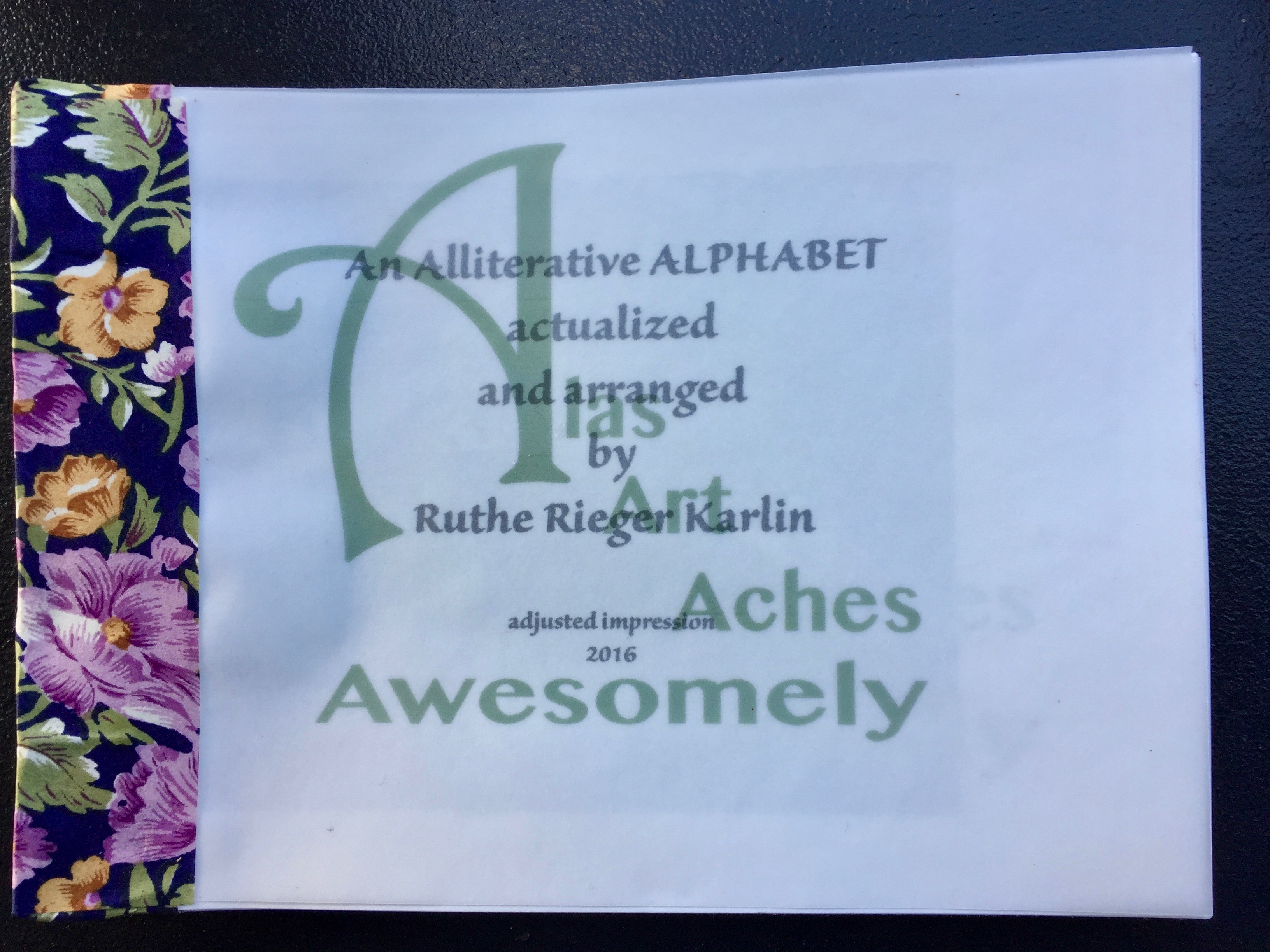 My last attempt is 5″ x 8″, single sheet stab binding. I like the way it looks but the book doesn’t open easily.
My last attempt is 5″ x 8″, single sheet stab binding. I like the way it looks but the book doesn’t open easily.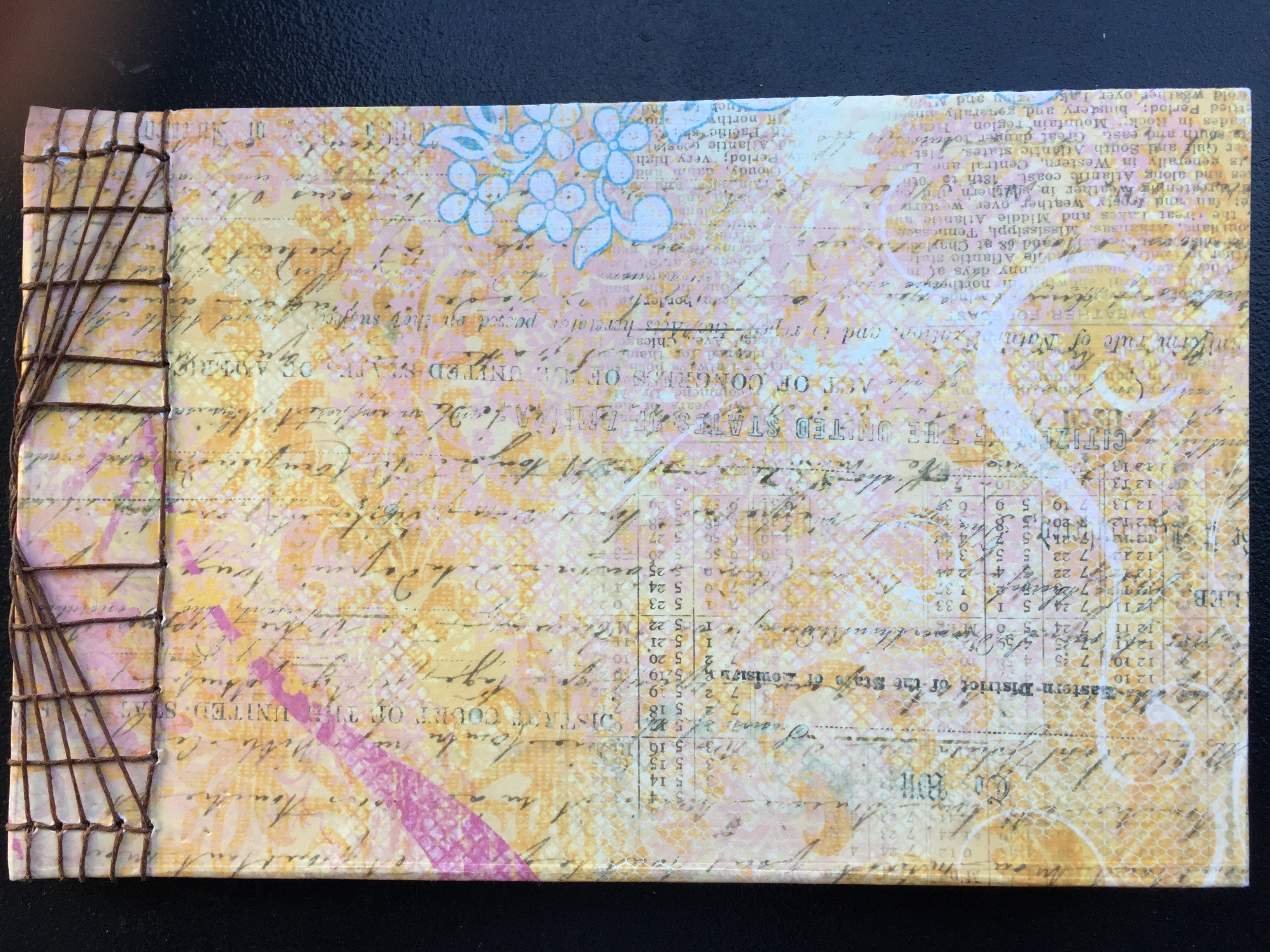 Using a single sheet format limits options for binding. Folded signatures provide many more choices. I have been struggling with this since I began seriously making books.
Using a single sheet format limits options for binding. Folded signatures provide many more choices. I have been struggling with this since I began seriously making books.

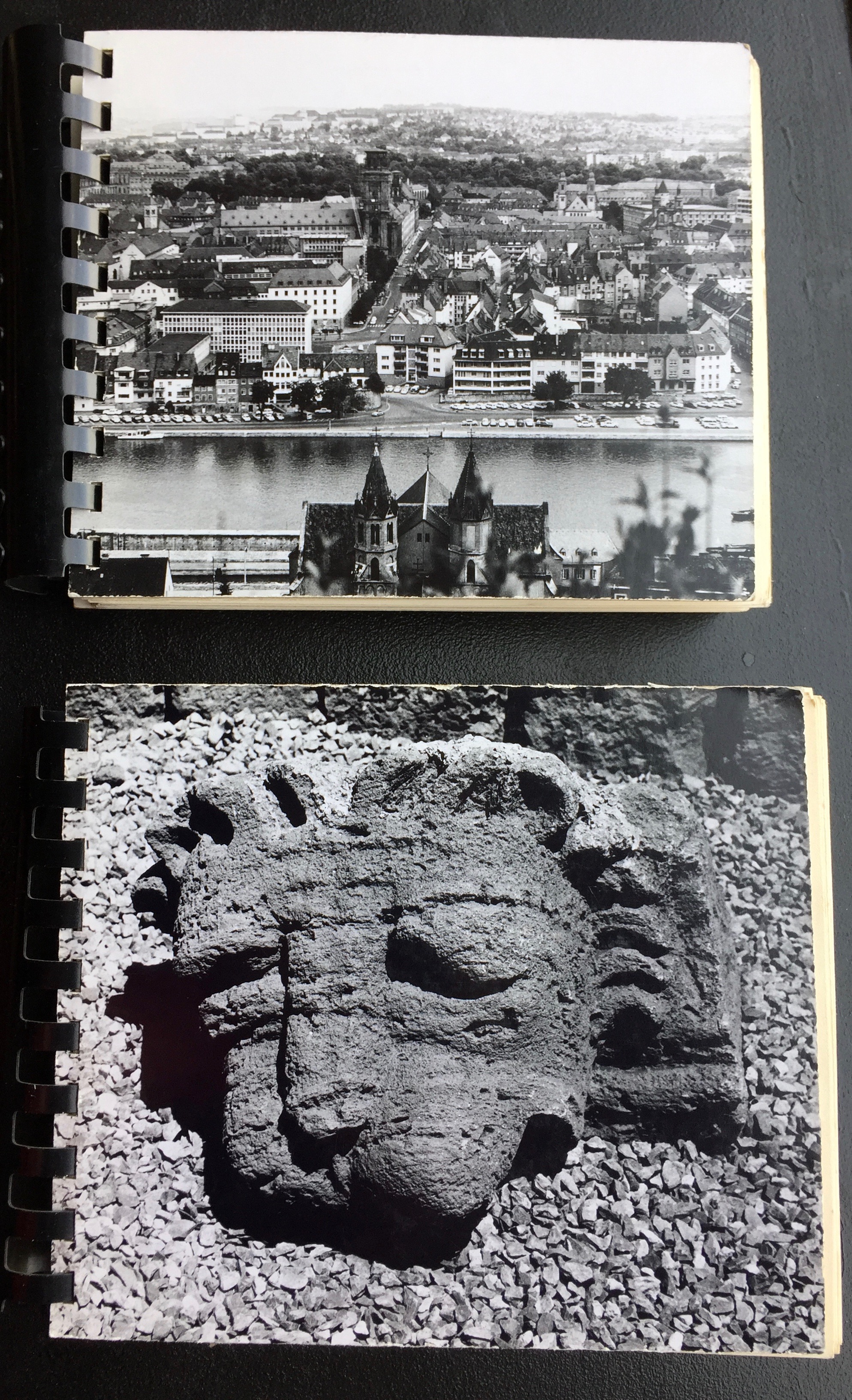 I didn’t really think about them as books, certainly not artist books. They were just compilations of photographs. The first book, which no longer exists, was created in 1963 or 1964. We took a trip to the East Coast going from Gettysburg and Williamsburg to Cape Cod. This book contained photographs of Victorian houses on Cape Cod. I didn’t know anything about making books or using archival materials. A few years ago I found that the book had aged badly, filled with brittle and yellowed pages. I think I removed the pictures but don’t remember where I put them.
I didn’t really think about them as books, certainly not artist books. They were just compilations of photographs. The first book, which no longer exists, was created in 1963 or 1964. We took a trip to the East Coast going from Gettysburg and Williamsburg to Cape Cod. This book contained photographs of Victorian houses on Cape Cod. I didn’t know anything about making books or using archival materials. A few years ago I found that the book had aged badly, filled with brittle and yellowed pages. I think I removed the pictures but don’t remember where I put them.